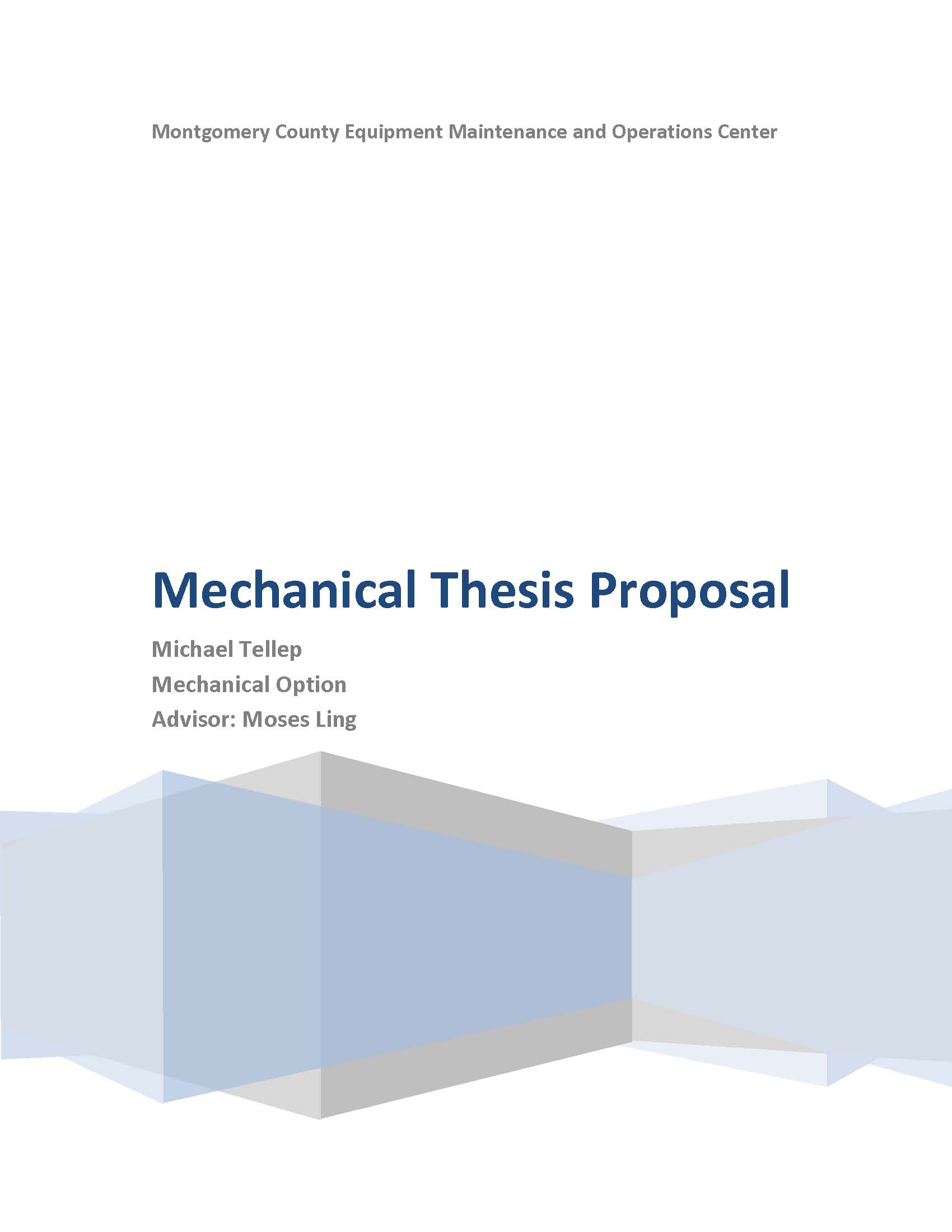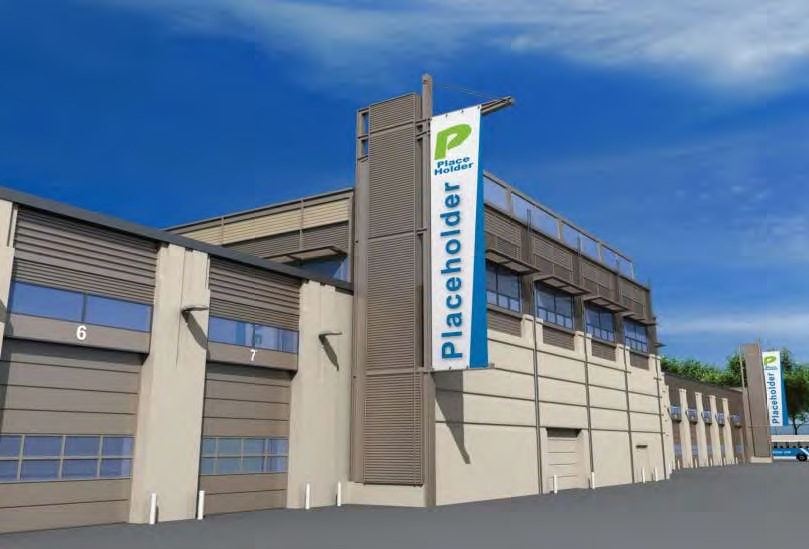 |
Mechanical Thesis Proposal |
Executive Summary:
The Montgomery County Equipment Maintenance and Operations Center, Building 1 (EMOC 1) is a 75,000 square foot building in Rockville, Maryland designed to be the new hub for Montgomery County's ground transportation services. EMOC 1 is a multi-purpose building consisting of both garage space for maintenance and office space for operations. The building is still under construction and is scheduled to be finished in February of 2013. The design strives for LEED silver or better.
The current mechanical system consists of two major divisions - the garage space and the office space. The garage space is serviced by two Energy Recovery Units (ERU) and one Heating and Ventilating (HV) unit, both to provide only heating to the space. Cooling is done by natural ventilation aided by large Circulating Fans (CF) and rooftop gravity ventilators placed evenly throughout the garage spaces.
The office spaces are serviced by three Rooftop Air Handling Units (RTU). These are VAV systems with a central heating and cooling plant. These systems are balanced so that they are of relatively equal size and service separate areas of the building with minimal ductwork.
Two alternatives will be considered in this thesis. Each alternative addresses a change for both the garage space and the office space since they can be considered independent divisions of the building. In the garage spaces, the effect number of Energy Recovery Units will be analyzed. The offices spaces will be analyzed on a change to two large Rooftop Units in one alternative, and a change to Chilled Beams in the other. The comparisons between the alternatives and the existing system will support conclusions about the methodology in designing systems with these energy efficient components.
Along with the study of the mechanical system of the building, the breadth topics of Architecture and Acoustics will be addressed. Details of all aspects of the study can be found later in this document. |
Architectural Breadth:
The current architecture of the building is mainly for functionality. There are small measures taken to provide a comfortable and pleasant work environment, however certain aspects could be improved or modified in conjunction with the proposed alternative mechanical systems. One item of particular interest is the current air handler placed in the same area as the rooftop courtyard connected to the office spaces. This issue will be addressed in order to provide places, like the courtyard, that are enjoyable for the occupants of the building. The option of enclosing this courtyard with a glass atrium will be addressed as well. This will change the aesthetic value of the courtyard to a year-round place for office workers to relax and take their breaks. An atrium here would also link to the mechanical system by providing a small chimney effect in the building, providing natural ventilation.
Other issues that will be addressed are the construction materials, methods, and overall placement of interior walls and ceilings in conjunction with the Acoustics breadth topic. |

